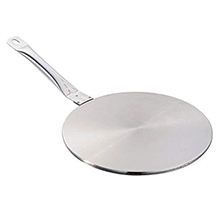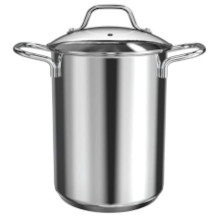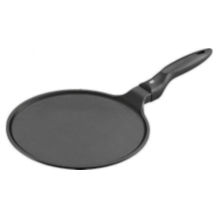Griddle pan purchasing advice: how to choose the right product
- The most important facts in brief
- Grill pans can be recognised on the one hand by the grooves on their surface, and on the other hand by their usually angular shape.
- The food is only placed on the grooves, fat and juices collect in the spaces between the grooves.
- Common materials are cast aluminium, stainless steel and cast iron, some of which have a coating.
- Square pans offer more grilling space, round ones fit on equally round hobs.
- Many grill pans are oven-safe. Unsuitable handles made of wood or plastic are ideally removable.
Barbecuing without a grill
Summertime is barbecue time: as soon as it is sunny and warm outside, many people gather on the terrace, in the garden or in suitable public places to prepare juicy meat and crunchy vegetables. In bad weather or during the cold season, socialising around the barbecue is not possible, but no one has to do without grilled food. You can easily prepare your favourite dishes with the grill pan. The only thing missing is the roasted aroma that comes from cooking on a charcoal grill. But grilling with the pan is simple, cleaning is quick and the result tastes great.
What distinguishes grill pans?
The special thing about a grill pan is its surface. It is not smooth like conventional frying pans, but ribbed. The fluting is modelled on the metal grid of a charcoal grill and results in the so-called frying profile. Meat that has been prepared in a grill pan has the typical stripes that you know from classic grilling. In addition, the meat is particularly crispy where it lies on the grooves.
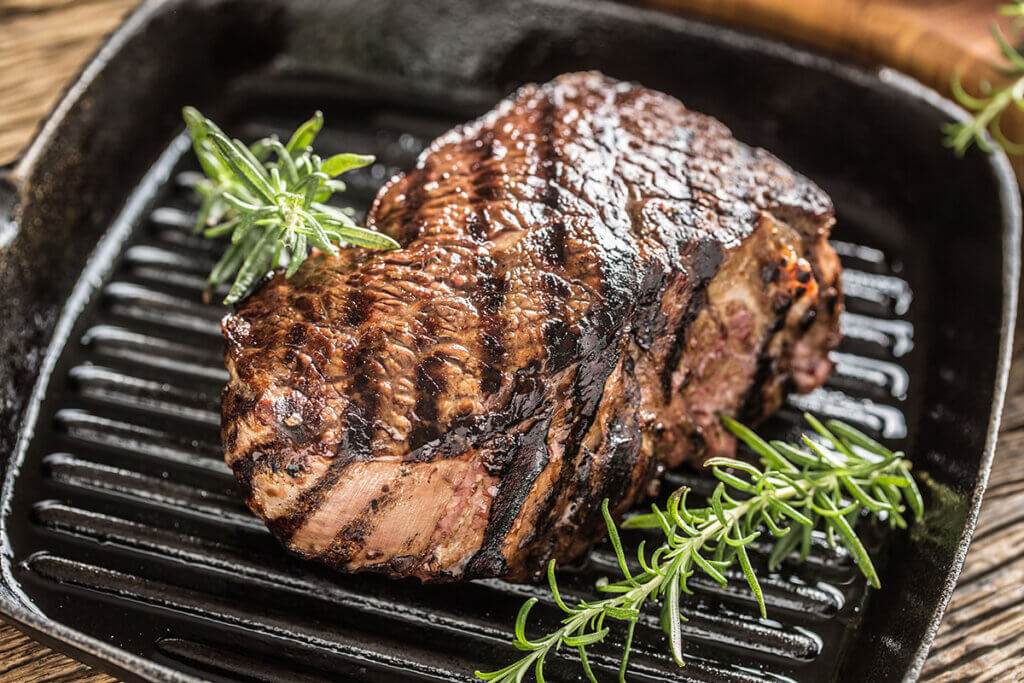
The design of the grill surface has a significant effect on the cooking process of the food, as it only lies on the ribs of the grill profile. The liquids from the food to be fried and the highly heatable oil used collect in the grooves between them. This means that the food does not cook in its own juices. If the pan is heated to high temperatures, the oil burns and smoke is produced. Although this does not create the characteristic grill aromas, it does give the food a flavour that cannot be achieved with a flat pan. Since hardly any oil comes into contact with the food, even low-fat frying is possible.
The low contact with the surface prevents the food from browning evenly in all places. If you want to achieve the most even browning possible, turn the food over about every 20 seconds. This way, both sides are exposed to the same high temperature throughout and they brown accordingly quickly. However, the grill marks are usually only faint.
Not only for meat
It is typical to fry pieces of meat or skewers, but grill pans are suitable for many more dishes. Even sausages, poultry or fish should not be missing from a well-stocked barbecue plate.
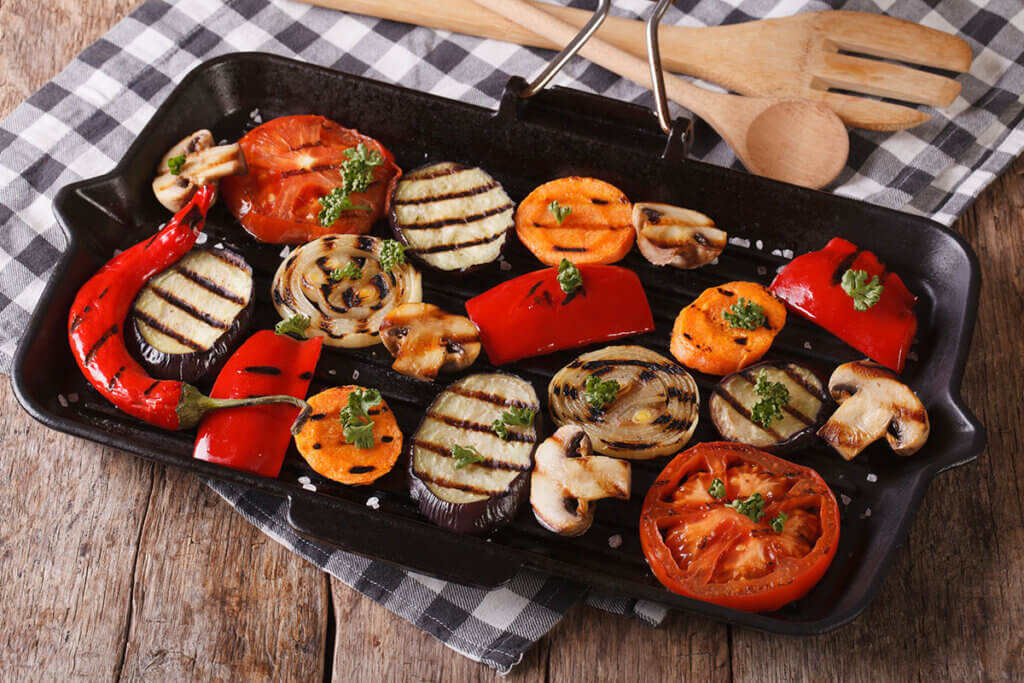
Vegetarians get their money’s worth with vegetables, grilled cheese or meat alternatives such as marinated tofu. Coarsely chopped courgettes, aubergine, peppers, red onions and green asparagus are ideal for preparation in the grill pan. It is best to grill the vegetables at slightly lower temperatures than meat so that they remain firm to the bite.
Common materials for grill pans
The material from which the grill pan is made determines essential aspects such as handling and thermal properties.
Cast aluminium pans
Although cast aluminium pans heat up very quickly, they do not retain heat for long. For grilling, the low heat storage means that the temperature in the pan drops as soon as you add the food to be grilled. If the temperature is not high enough, the food will not fry optimally but rather simmer.
Cast aluminium pans are made by pouring a molten aluminium alloy into moulds and letting it cool inside. They are lighter than other grill pans, but more robust than pans made of pressed aluminium. On the other hand, the bottom becomes uneven more quickly. This is because cast aluminium pans expand greatly during heating and then contract again. They usually have a ceramic or PFTE surface coating that gives the pans non-stick properties.
Stainless steel pans
Stainless steel grill pans are heavier than cast aluminium versions. Their thermal conductivity is low, but they store heat well. Finished dishes stay hot longer. To heat up more quickly, many stainless steel grill pans have either a capsule base with a copper core or a sandwich base with an intermediate layer of the material. Alternatively, aluminium is used.
There are both coated and uncoated grill pans. Uncoated models are usually oven-safe. The food does not burn in coated grill pans, but not every coating is suitable for the oven. Because of the nickel content in stainless steel, uncoated pans are not recommended for allergy sufferers. Coated pans, on the other hand, can be used by allergy sufferers because the food does not come into direct contact with the allergy-causing stainless steel.
Cast iron pans
Cast iron grill pans have the highest weight. This ensures that the pans store heat very well. However, they need time to reach the optimum grilling temperature. The material is durable and can withstand high temperatures without any problems. Since iron is magnetisable, you can use the pans from scratch with all types of cookers, including induction cookers. If the handle is made of the same material, the entire pan is also oven-safe.
The production of cast iron pans is roughly the same as that of cast aluminium: in both types, the hot, liquid material hardens in a mould. While the surface of cast aluminium pans is then coated with a non-stick layer, there are both uncoated and enamelled cast iron pans. Uncoated cast iron pans must be baked before they are used for the first time. You usually have to do this yourself. However, you can also buy pre-fired cast iron pans. Baked iron pans have a protective layer, also called patina, which becomes more pronounced with use over time.
Common coatings
Grill pans come in uncoated and coated versions. Each coating has its own characteristics that influence the grilling experience.
PFTE coating
PFTE or polytetrafluoroethylene is a surface coating for pans and pots. It is also known under the trade name Teflon and ensures that food does not stick to the surface or burn. Hardly any oil is needed for cooking. PFTE coatings can be recognised by their waxy texture. They are easy to clean and resistant to acid. High-quality versions are composed of several layers, which enhances the positive properties.
It is best not to heat the pan without contents: too high temperatures can damage the coating and release substances that are anything but healthy. Manufacturers sometimes specify the maximum temperature.
Ceramic coating
Grill pans with a ceramic coating conduct and distribute heat evenly over the entire surface. Depending on the product, they can withstand temperatures of up to 400 degrees Celsius. The ceramic powder gives the surface a smooth structure and non-stick properties. High-quality versions are made up of several layers. Although these make the grill pans hard and robust, scratches and discolouration are possible over time.
It is therefore advisable not to use cookware made of metal. Utensils made of wood, plastic and silicone do not damage the surface. Use fats with a high smoke point such as refined rapeseed or sun oil. Oils such as virgin olive oil, on the other hand, decompose at high heat and reduce the non-stick effect.
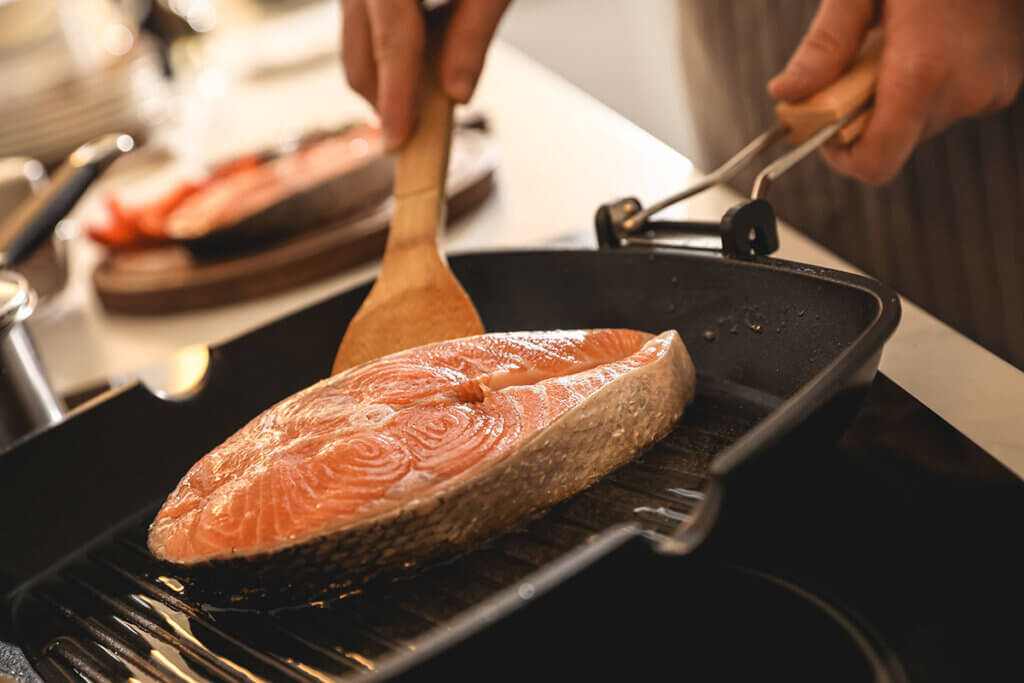
Enamel coating
Enamel is a protective coating called fused glass. It is usually composed of borax, feldspar, fluoride and quartz and can be applied to various substrates. In the final product, the base material and the fused glass are inseparably fused together.
The surface is smooth and non-porous, rust-free and extremely easy to clean. Enamel grill pans not only tolerate high temperatures, but are also ovenproof. However, they are not equipped to withstand strong temperature differences: If you take the grill pan off the hot stovetop and rinse it immediately with cold water, you can damage the surface.
Other important purchase criteria
A good grill pan is robust, can withstand high temperatures and distributes the heat optimally to the food. Criteria such as design, material and frying properties can be used to determine the ideal grill pan for your own needs. On the packaging or in the product description, you will find detailed information such as the maximum tolerated temperature or suitability for cooker and oven.
Form and function
In contrast to the common pan shape, grill pans are mainly rectangular or square. Round designs are in the minority. Square pans offer about 20 per cent more frying surface: they are more suitable than round pans for long meat and vegetable skewers or large pieces, as the food to be grilled must not overlap for optimum heat distribution. However, since square pans do not fit on conventional hotplates, the heat does not distribute as well in them. Some induction cookers allow you to connect two hobs so that rectangular pans can also be heated evenly. Round grill pans can conveniently be stacked on top of your other pans.
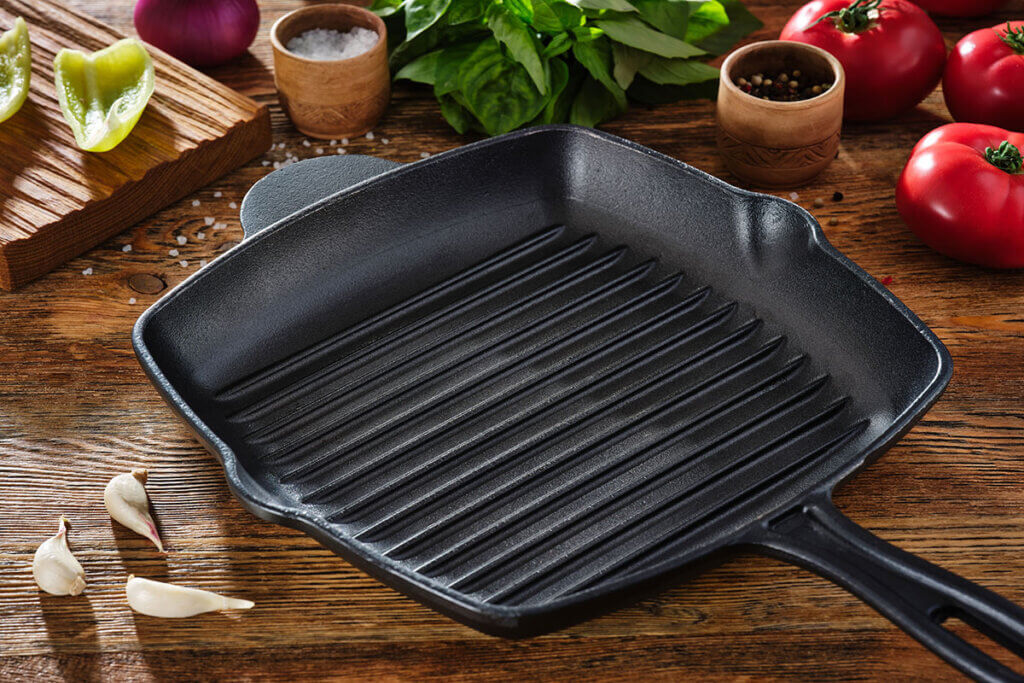
The real special feature of grill pans are the grooves. They ensure that the grilled food does not lie completely in the oil and its own juices For this purpose, the ribs should not be too close to each other on the one hand, and on the other hand they should have deep gaps in which the liquids can optimally collect. Many grill pans are equipped with a pouring rim so that you can easily pour off the collected juices and fat.
Dimensions
Conventional pans have a diameter of 20 to 32 centimetres. This also applies to round grill pans. With square grill pans, the diameter becomes the side length: the aluminium grill pan from Hoffmann, for example, has an overall size of 28 x 28 centimetres. When choosing the right pan size, don’t forget that the usable surface is smaller than the total size. In the Hoffmann example, this is 23 x 23 centimetres. With rectangular pans, the handle is on the short side. The long side often measures more than 32 centimetres The rectangular cast iron grill pan from Staub, for example, measures 21 x 34 centimetres.
Handle
To be able to carry the pan easily, a long and sturdily attached handle is important, especially if you want to lift a heavy, filled cast iron pan. So that you can also use the pan in the oven, the handle is either made of the same ovenproof material as the body of the pan or is removable.
Wood is not ovenproof, while some plastics have limited suitability for the oven. In these cases, manufacturers usually specify a maximum oven temperature that the material can withstand. Silicone handles are also used. Unlike cast iron or stainless steel handles, plastic, silicone or wooden handles do not get hot. So you don’t need an oven mitt when you grill with the pan on the hob.
If the handle is made of the same material as the body, both are ideally made of one casting: This way, the handle cannot wear out at the attachment point and you can put the grill pan in the oven. To be able to hold the hot handle better than with a pot holder, there are also silicone covers that can be put over it.
Suitable for induction and oven?
Owners of induction cookers do not have to worry about whether common grill pans are suitable for their cooker: Products made of cast iron are magnetisable and therefore suitable for induction from the ground up. Aluminium or stainless steel, on the other hand, do not have this property, but grill pans made of these materials are equipped with a ferromagnetic core or an intermediate layer on the bottom. Manufacturers usually speak of an all-stove base.
Whether grill pans can be used in the oven depends on the coating and the handle: Cast iron and uncoated stainless steel pans are ovenproof, but PFTE coatings are not. For ceramic pans, it is advisable to check the manufacturer’s instructions. If the handle is either ovenproof or removable, you can let the food cook in the oven.
Cleaning
Cleaning coated and uncoated cast aluminium and stainless steel pans is easy: Let the pan cool down a little. Then clean it with water and a cloth or sponge. If necessary, you can use a mild detergent or fill the pan with water and dissolve baking powder in it. The only important thing is that you do not use any aggressive cleaning agents and do not expose the pans to thermal shock.
Dishwashing liquid is taboo for uncoated cast iron pans. To clean the cooled pan, use only warm water and a brush. To loosen stubborn stains, you can boil the pan briefly with a little water. Wait until the pan is no longer hot and take the brush again. Then oil the pan lightly with a highly heatable cooking oil. Only uncoated stainless steel pans may be put in the dishwasher. All other grill pans do not benefit from machine cleaning.
Fig. 1: © weyo / stock.adobe.com | Fig. 2: © FomaA / stock.adobe.com | Fig. 3: © New Africa / stock.adobe.com | Fig. 4: © Andrey / stock.adobe.com

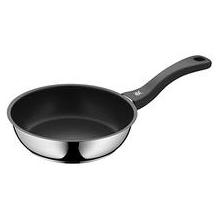
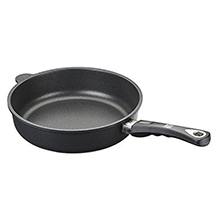
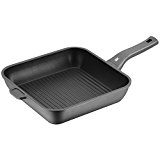
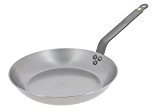
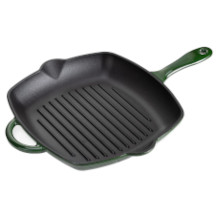
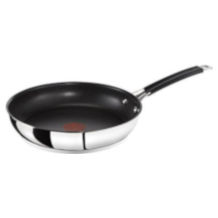
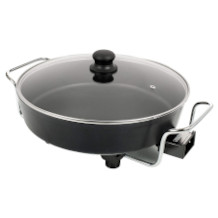
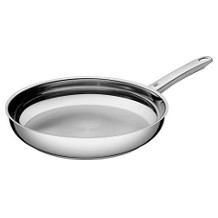
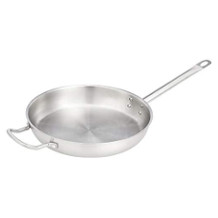
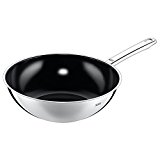

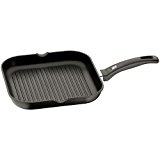
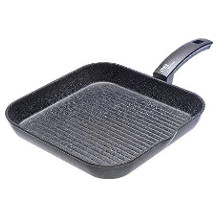
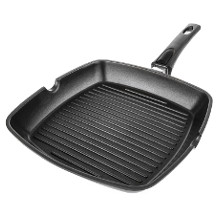
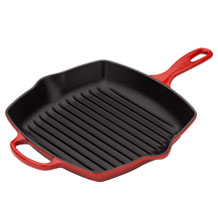
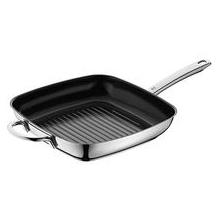
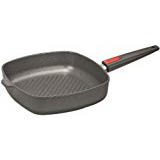
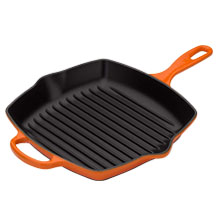
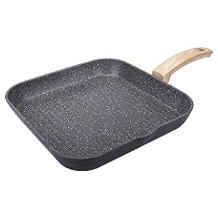
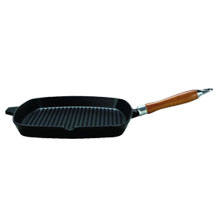
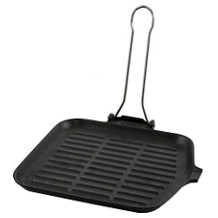
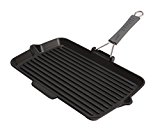
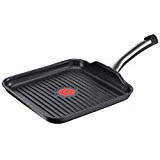
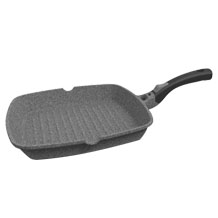
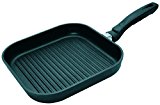

 341 reviews
341 reviews



